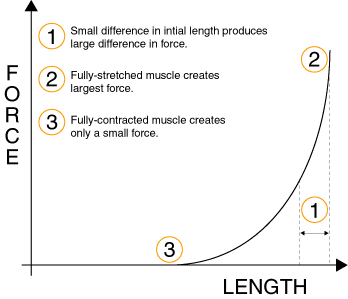
The Air Muscle is an extraordinary actuator that is small, light, simple and 'friendly'. It is soft, has no stiction, is easily controllable and exceptionally powerful.
The Air Muscle consists of a rubber tube covered in tough plastic netting which shortens in length like a human muscle when inflated with compressed air at low pressure.
An Air Muscle has a power-to-weight ratio as high as 400:1, vastly outperforming both pneumatic cylinders and DC motors that can attain a ratio of only about 16:1. It has been in continuous development for advanced robotics work by Shadow since 1982, and is now available for use in a variety of applications as a powerful, lightweight actuator. Air Muscles are normally operated using compressed air in the 0-70psi (0-5 bar) range.
Range Available
Overview
Construction
Properties
Operational - requirements
Fixtures and fittings
Range of Air Muscles Available
The Air Muscles are currently available in three standard sizes. Strength of the muscle increases with increasing diameter; longer muscles give a longer movement. The standard sizes are:





